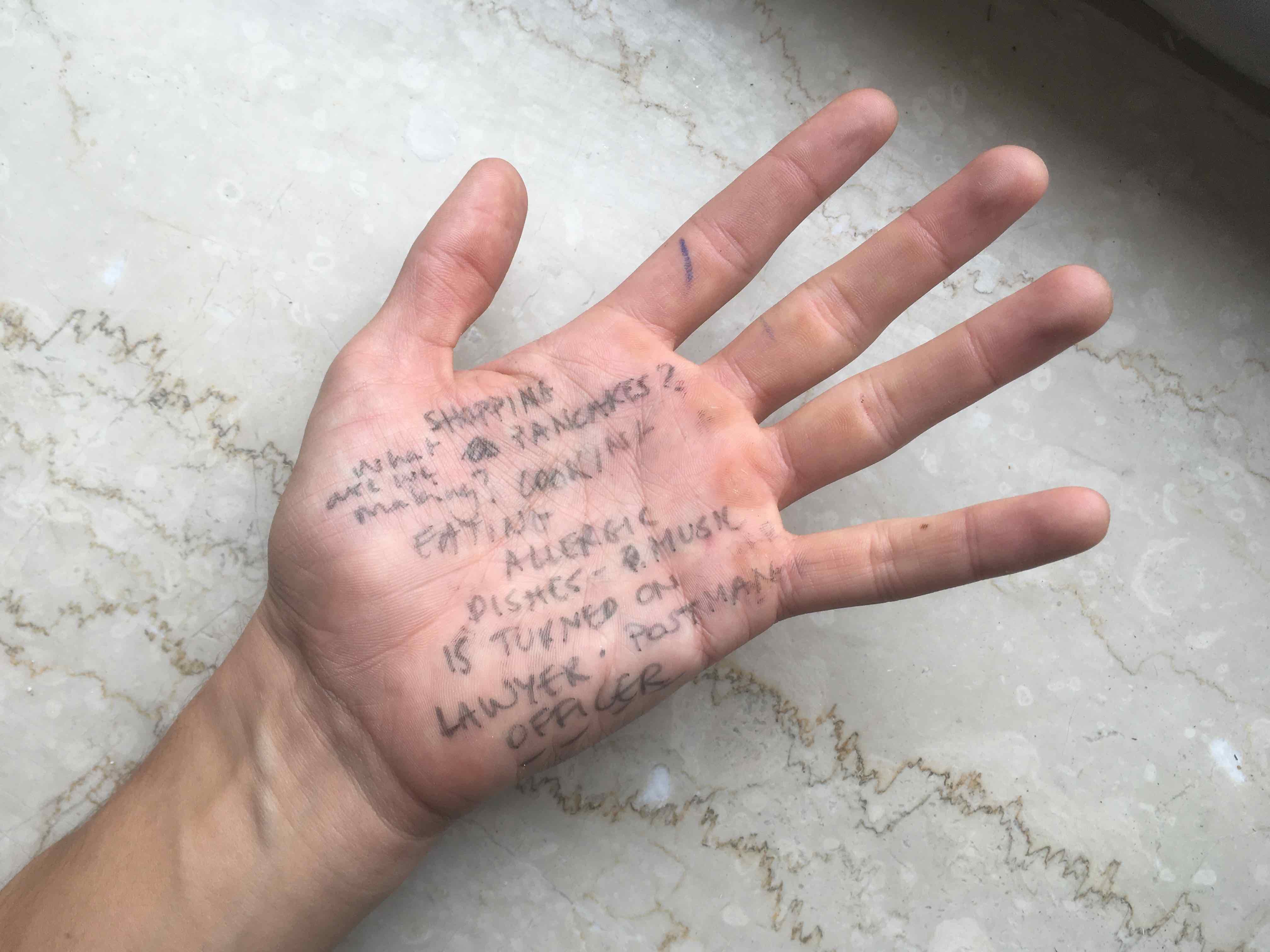
Session 4 - I am developing a bond with the participants. The routine of having 1.5h time slots with 7 individuals each week begins to wear in.
Rest
I notice too how the …

Session 4 - I am developing a bond with the participants. The routine of having 1.5h time slots with 7 individuals each week begins to wear in.
I notice too how the …
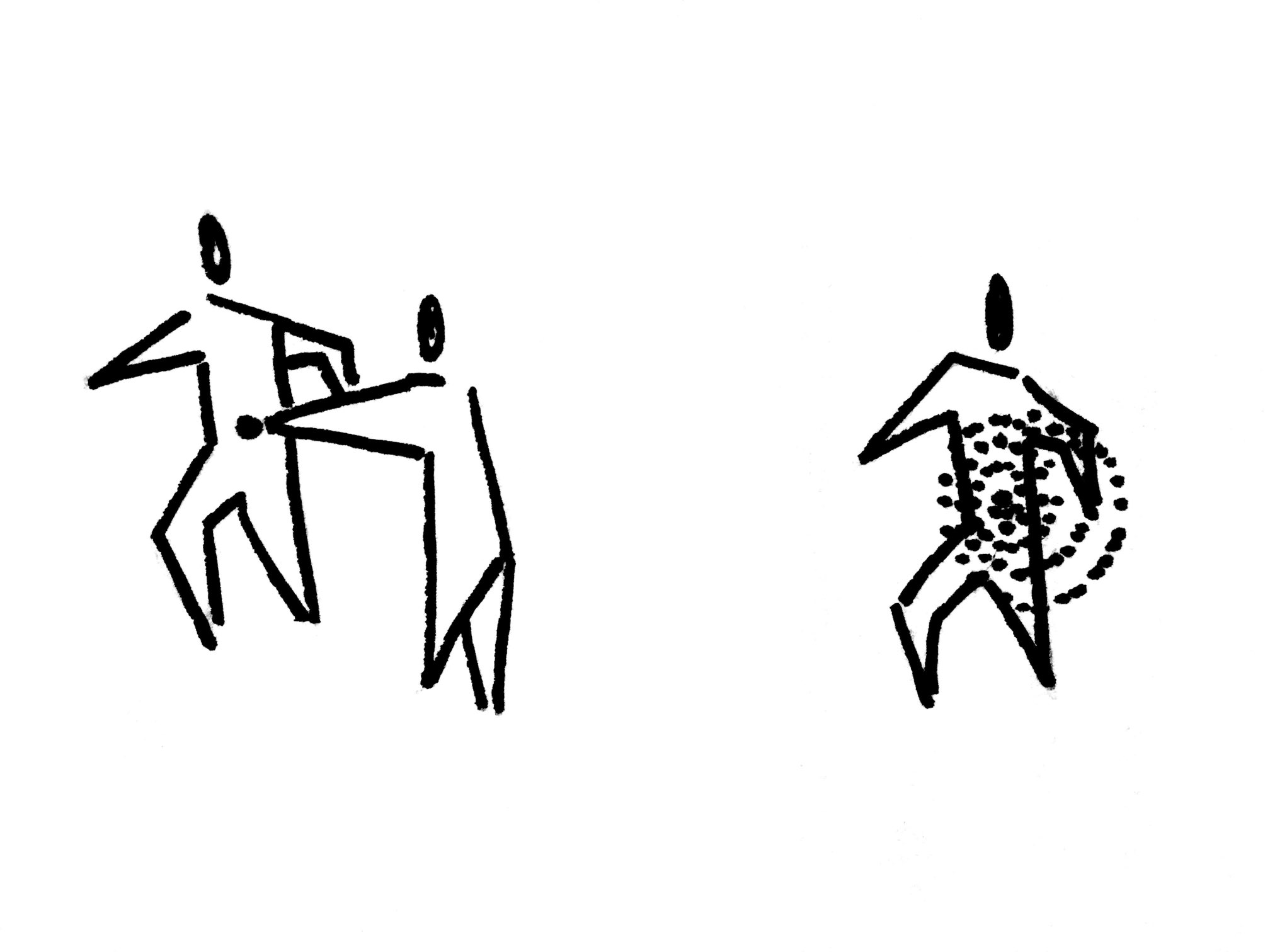
In duo, one person starts in a neutral 'floating' position, waiting for a touch on the body by the other. When feeling the touch of the other, it can be thought of as a drop of ink, spreading in a body of water, acting as an impuls to engage in …
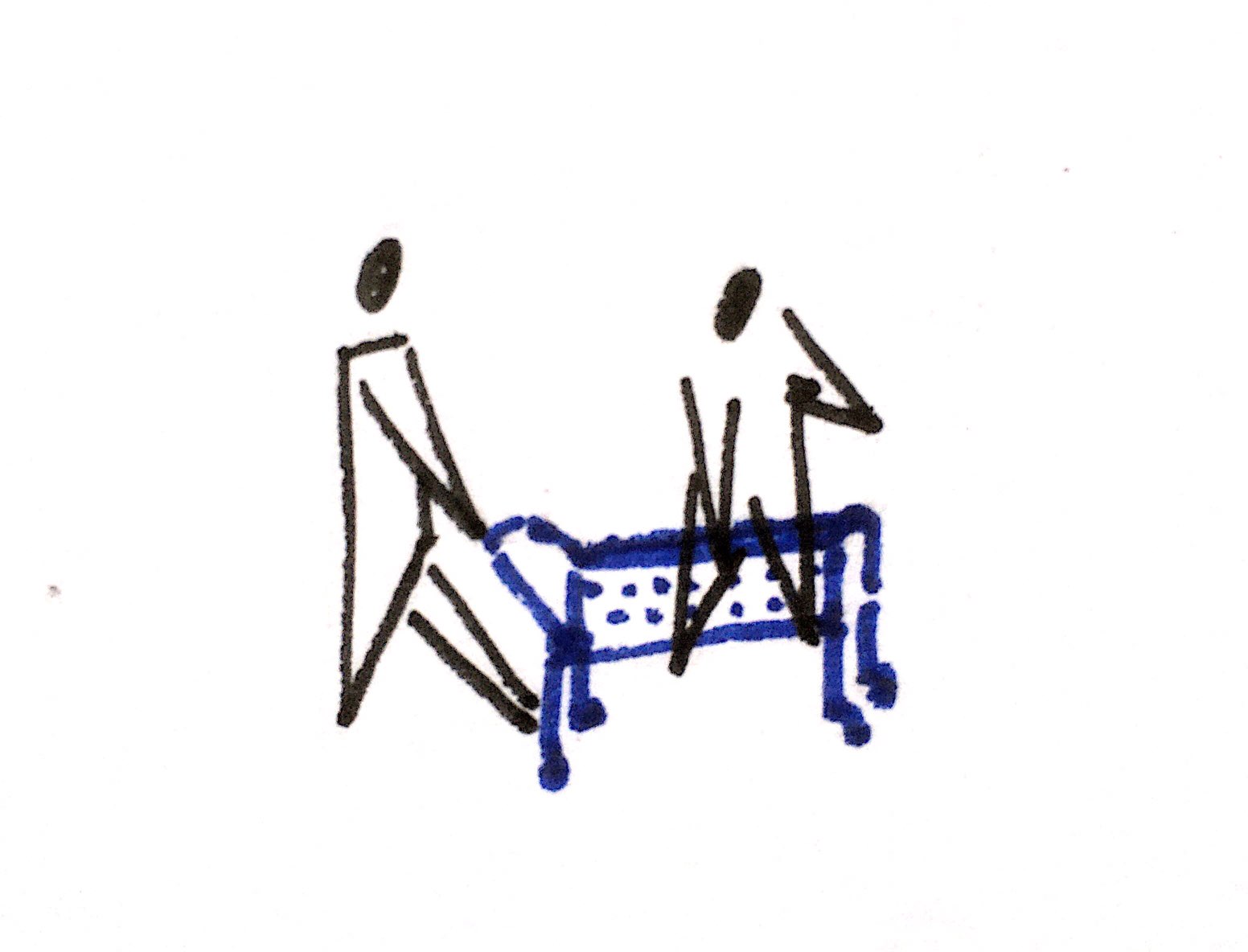
After warming up the body with several movement exercises, one can start by (for example) taking the others into a scenario such as organising and having a dinner party. You could begin in the supermarket, deciding together who to invite and what to cook. Back home, you are getting everything …
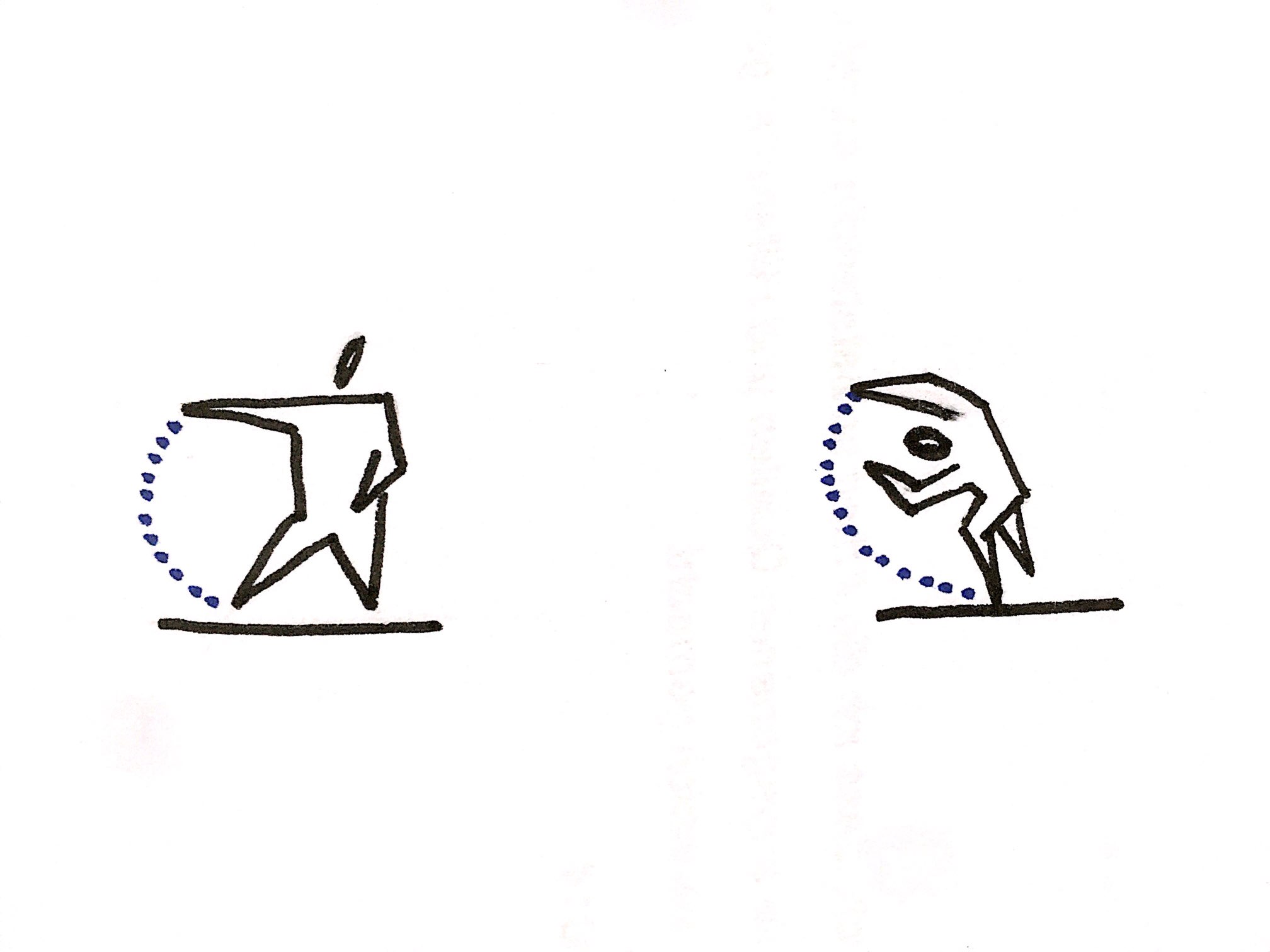
Negative space is a concept widely used across the arts, referring to the empty space, the space that is not filled. When moving your body, you constantly define new spaces with your body parts. By having your legs apart, you create a space inbetween, just as by holding your arms …
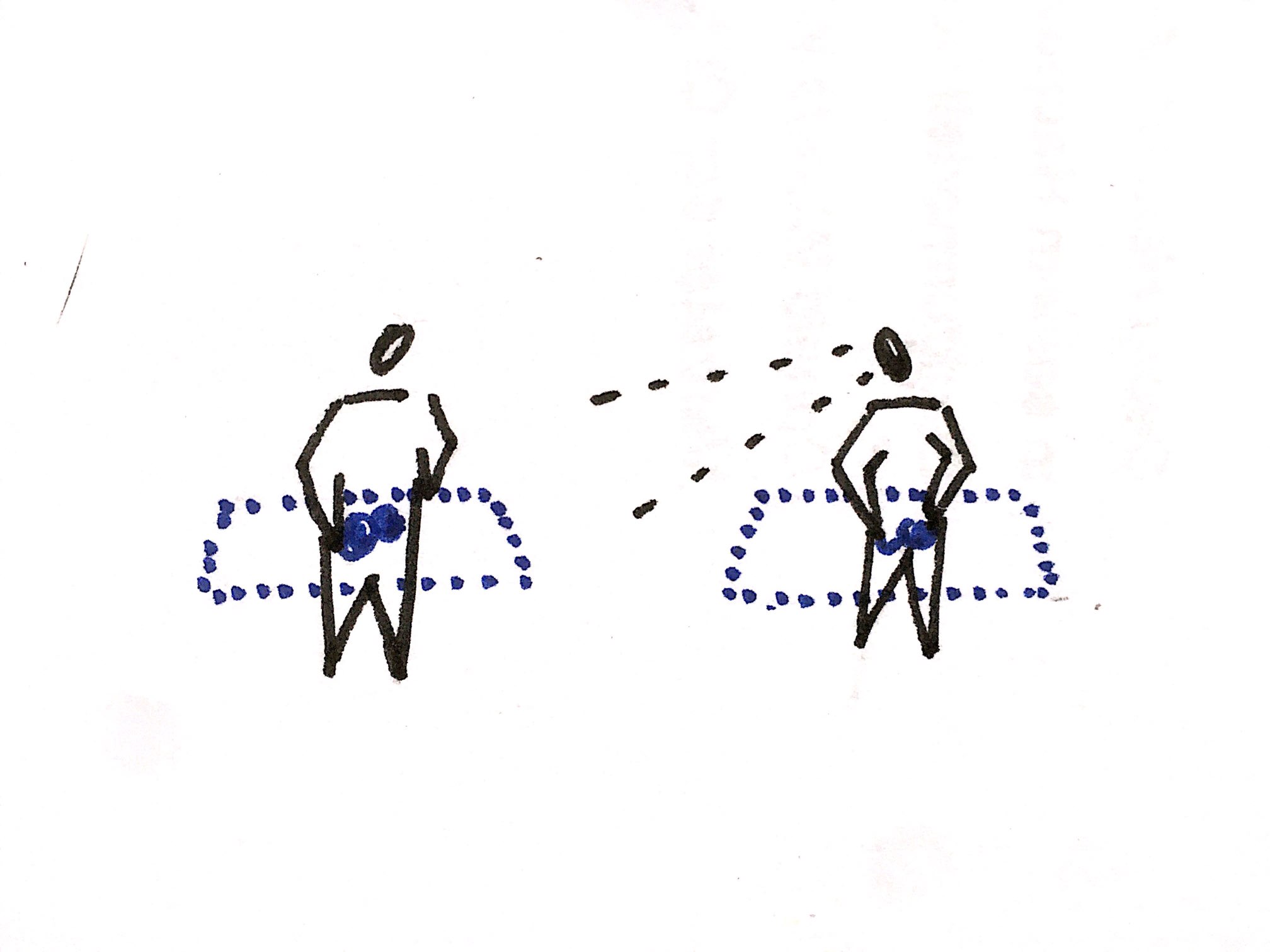
After warming up the body with several movement exercises, one can start by showing the others how they used to bake bread (or any other activity), physically showing every step of the baking process. The others mirror the actions. Now it's up to the one who's showing, to ask someone …
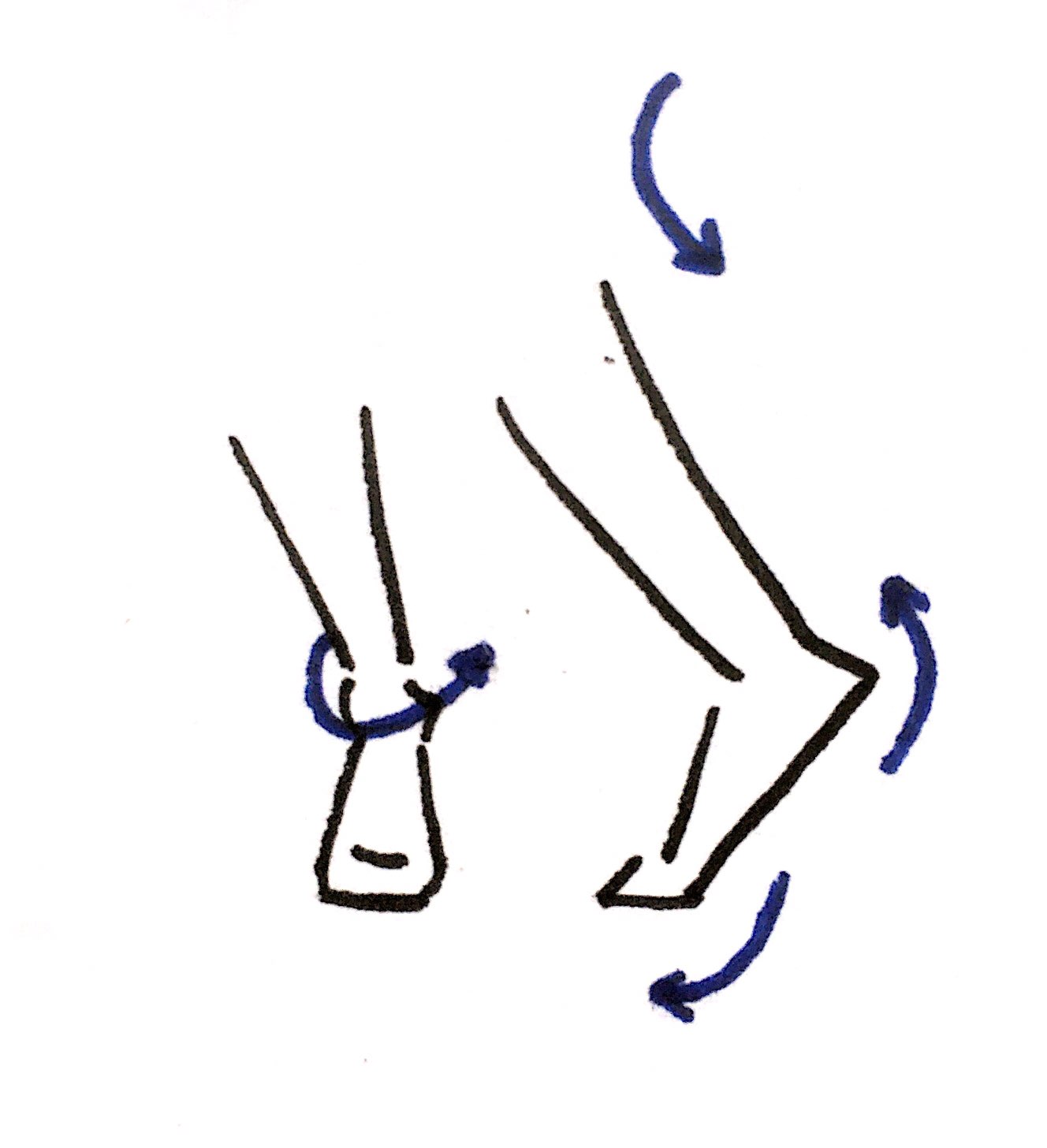
Start with exploring the relation between hips and upper body by holding one hand under the belly, and one the chest. Now shift the focus completely on your legs, stretching out the individual toes, heels, ankles and knees, involving each of those in a little dance. First, keep your chest …
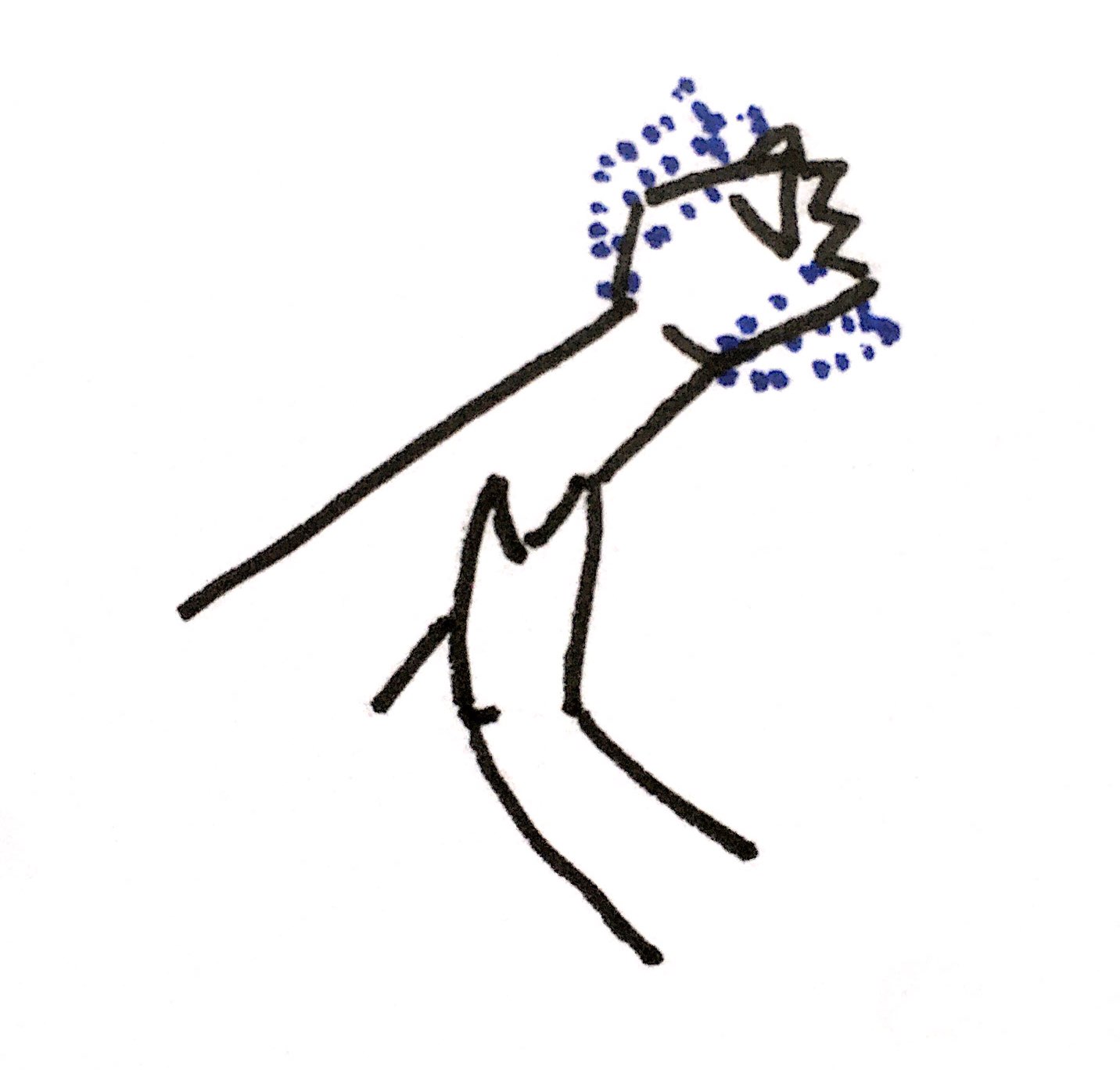
With one hand, hold your forearm firmly. Now make a fist and tension your arm with all of your strength. Try to move the tensed arm around and perform a little fist-choreo while keeping it tight. Then let go. Soften your arms but hold your hand up, performing a new …
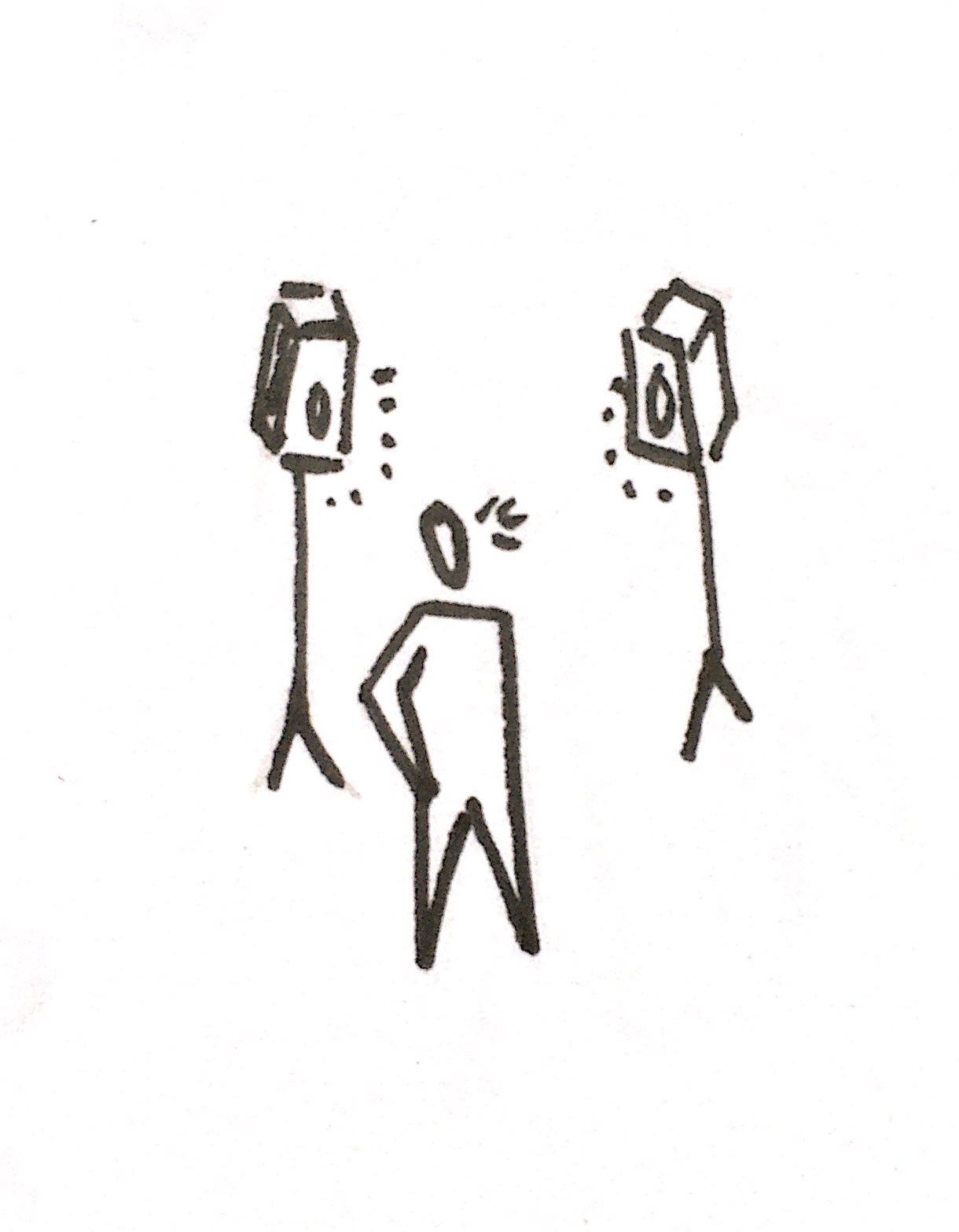
After warming up the voice, take a backing track or a put a beat together (ideally without vocals) and play it on repeat. With or without a microphone, start vocal jamming on the backing track, whether you are humming silently, are screaming out loud, use your voice and try out …
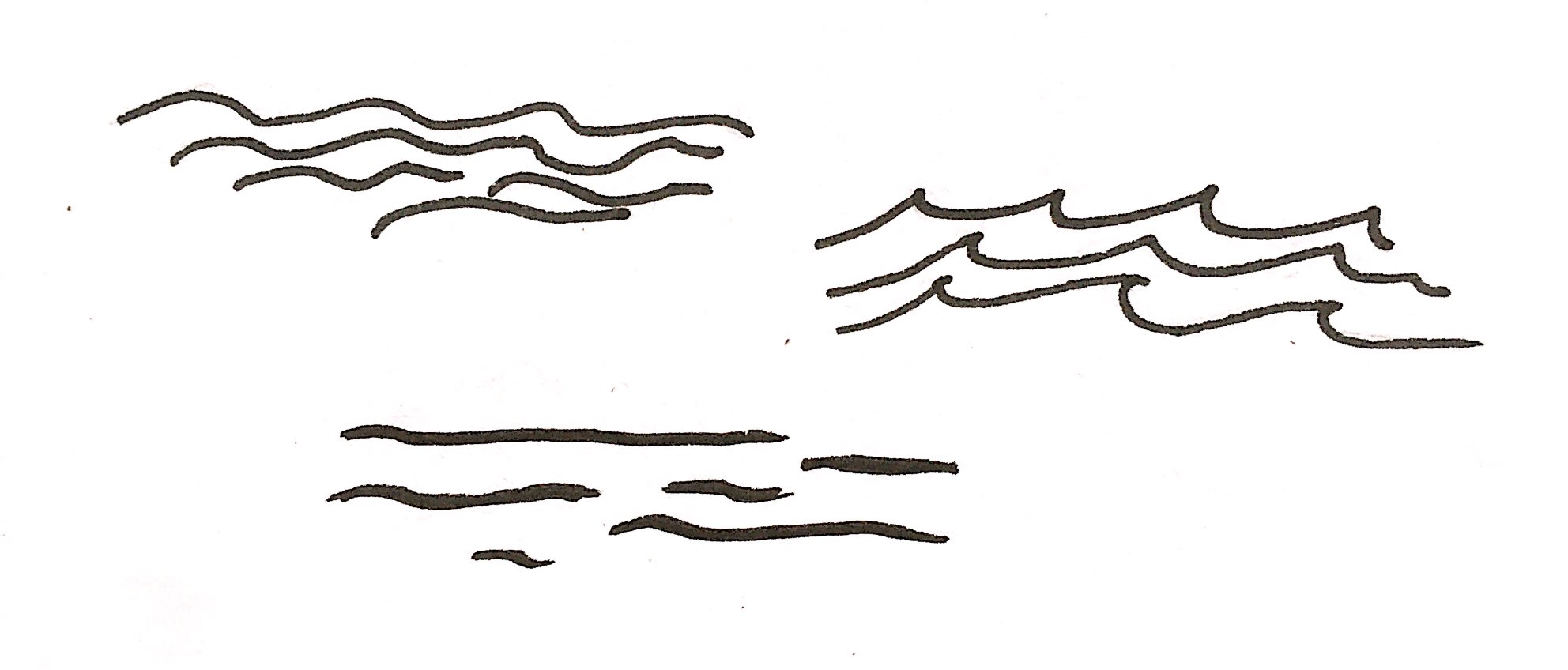
If your current mood was a state of the sea, what would it be? Calm, misty, a light breeze or heavy waves and wind? Interpret that bodily and empathise with that big mass of water. Stay in it for some minutes to then change to a different state of the …
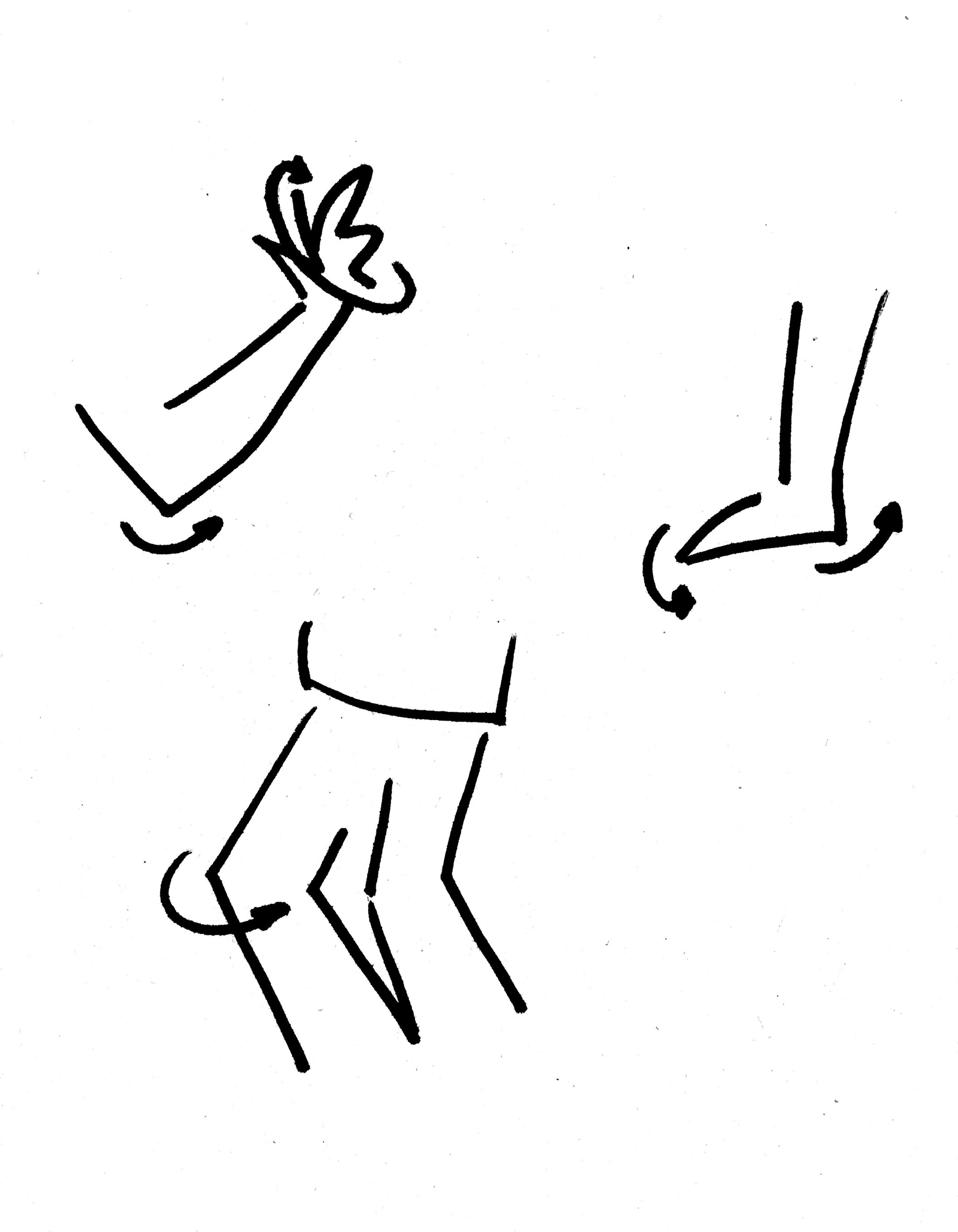
Stand firmly on your two feet. Start rocking your body back and forward. Now stretch your limbs and start with waking up your whole body. Can you feel the way your arms are connected to your torso through your shoulders? Now oil your joints. Move your fingers, wrists, elbow and …
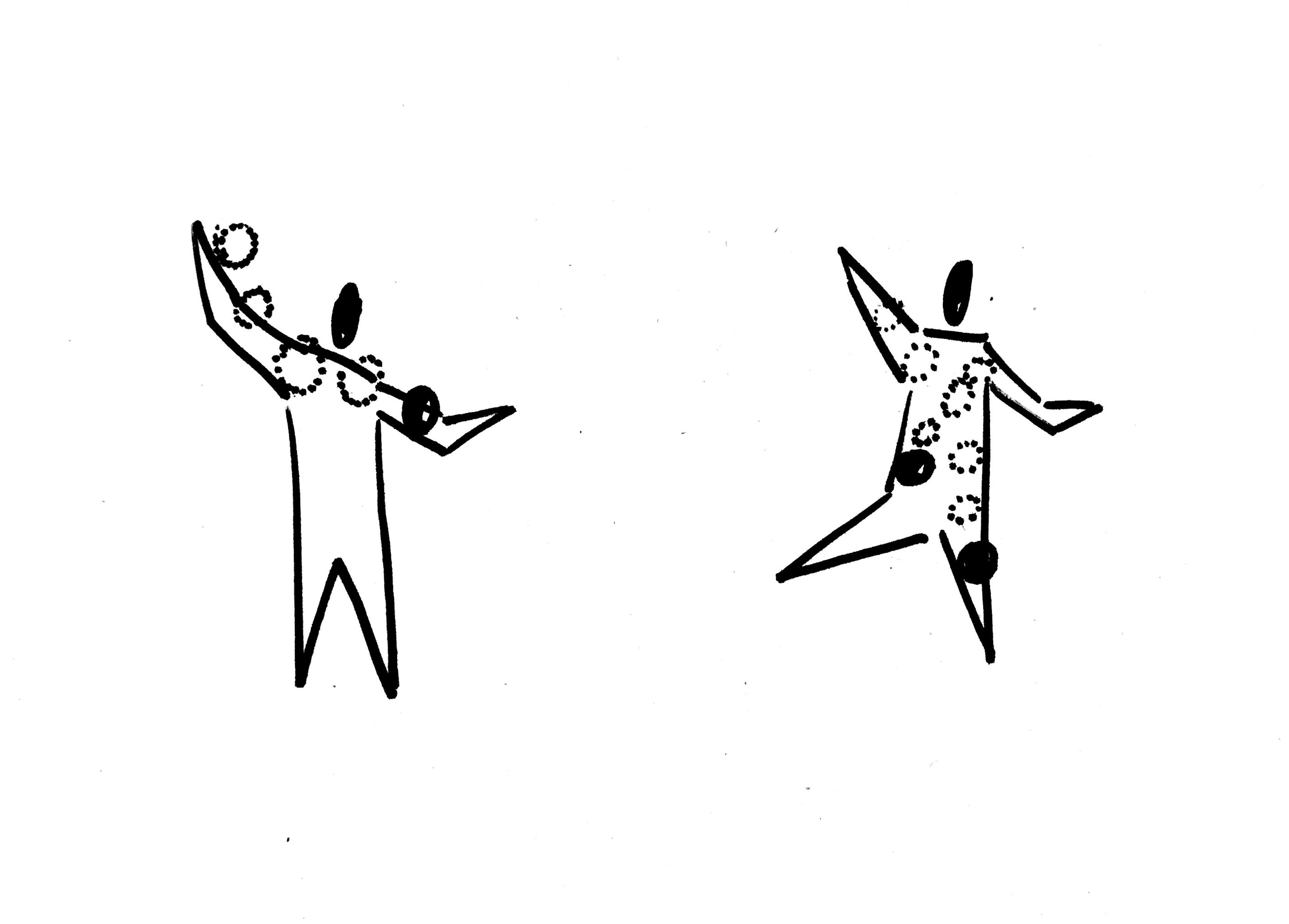
Lift up your arms in a floating position and imagine that from the tip of your hand, inside your body, a smooth oily ball starts rolling wherever gravity will take it. Play with the ball and let it travel through your body, leaving via your shoulders through your torso into …
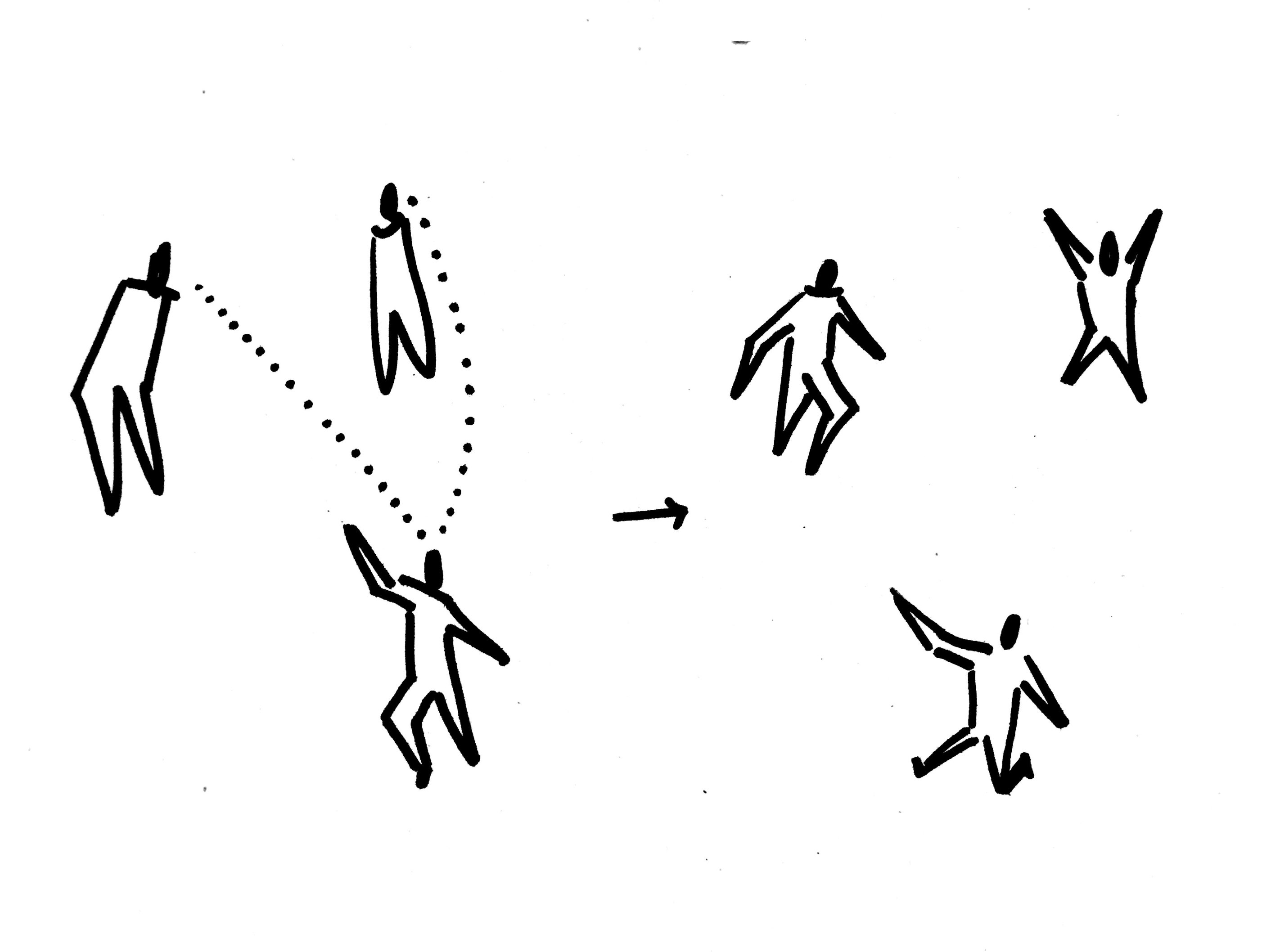
With or without music, let everyone take a moment to find their movement. Now try to keep track of eachother and follow (mirror/interpret/...) the person with the most obvious moves. Does it influence the collective movement aesthetic? Allow for taking over and handing over the lead. After a few …
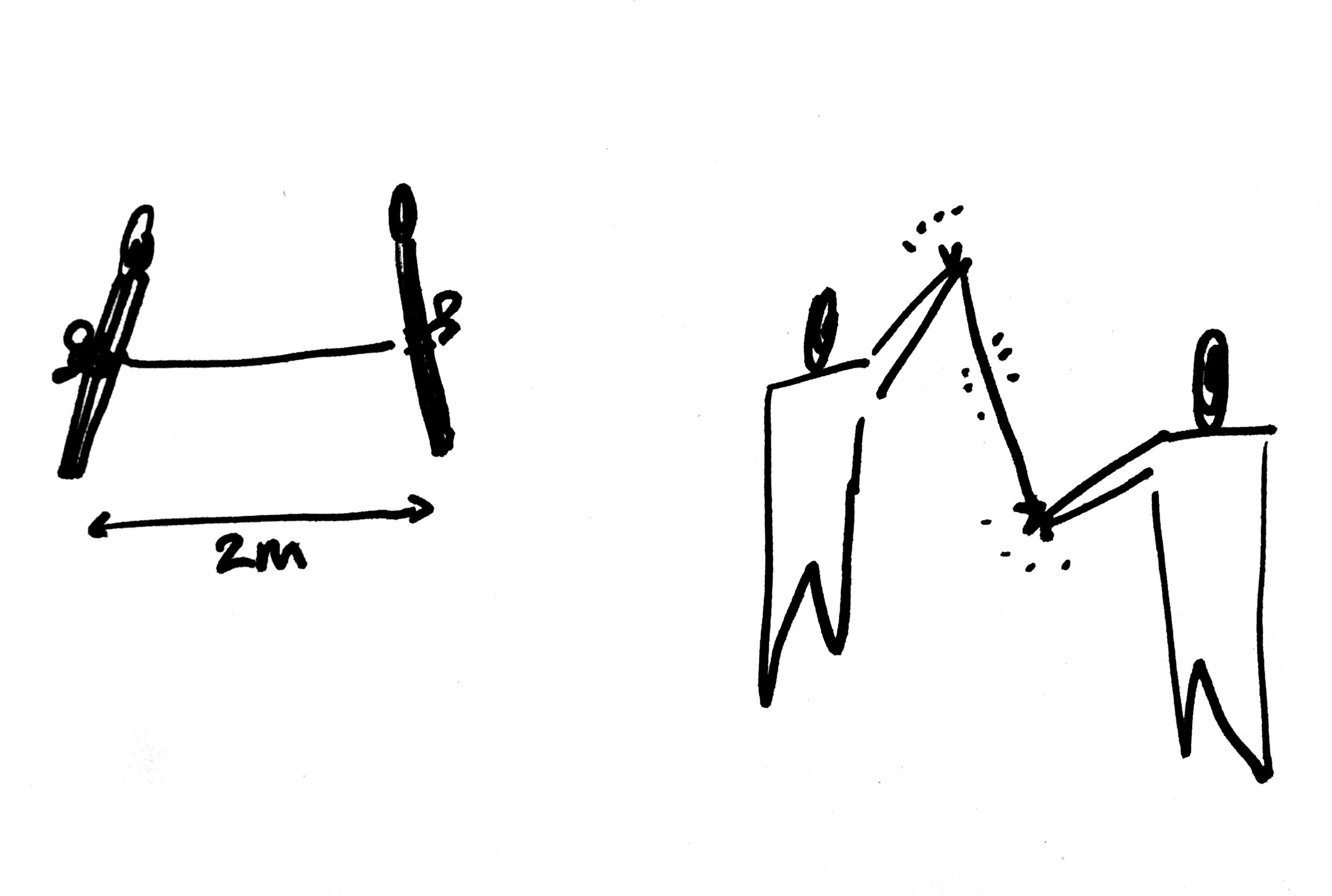
Cut a two meter (or shorter) piece of string and tie it around the middle of a matchstick at each end. Let one person hold one of the matchsticks between their fingers and give the other end of the string to someone else. Do this until everyone's hands are connected …
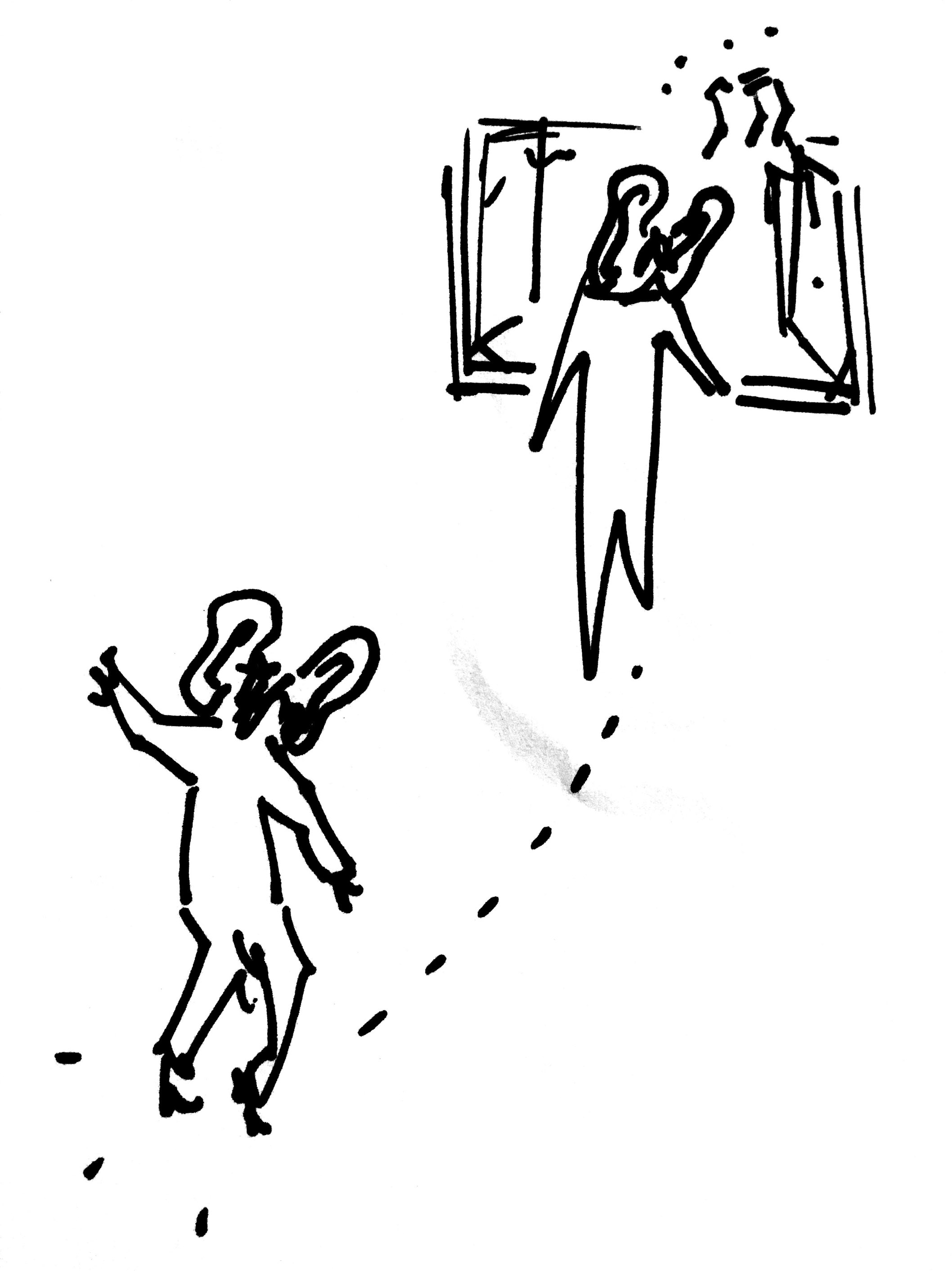
When inside a room, position yourself in front of an open window. Listen to what is there. What do you observe, what are you hearing? Is there a specific sound or noise which gets your attention? Try to take in that sound by producing the same tone vocally, but softly …
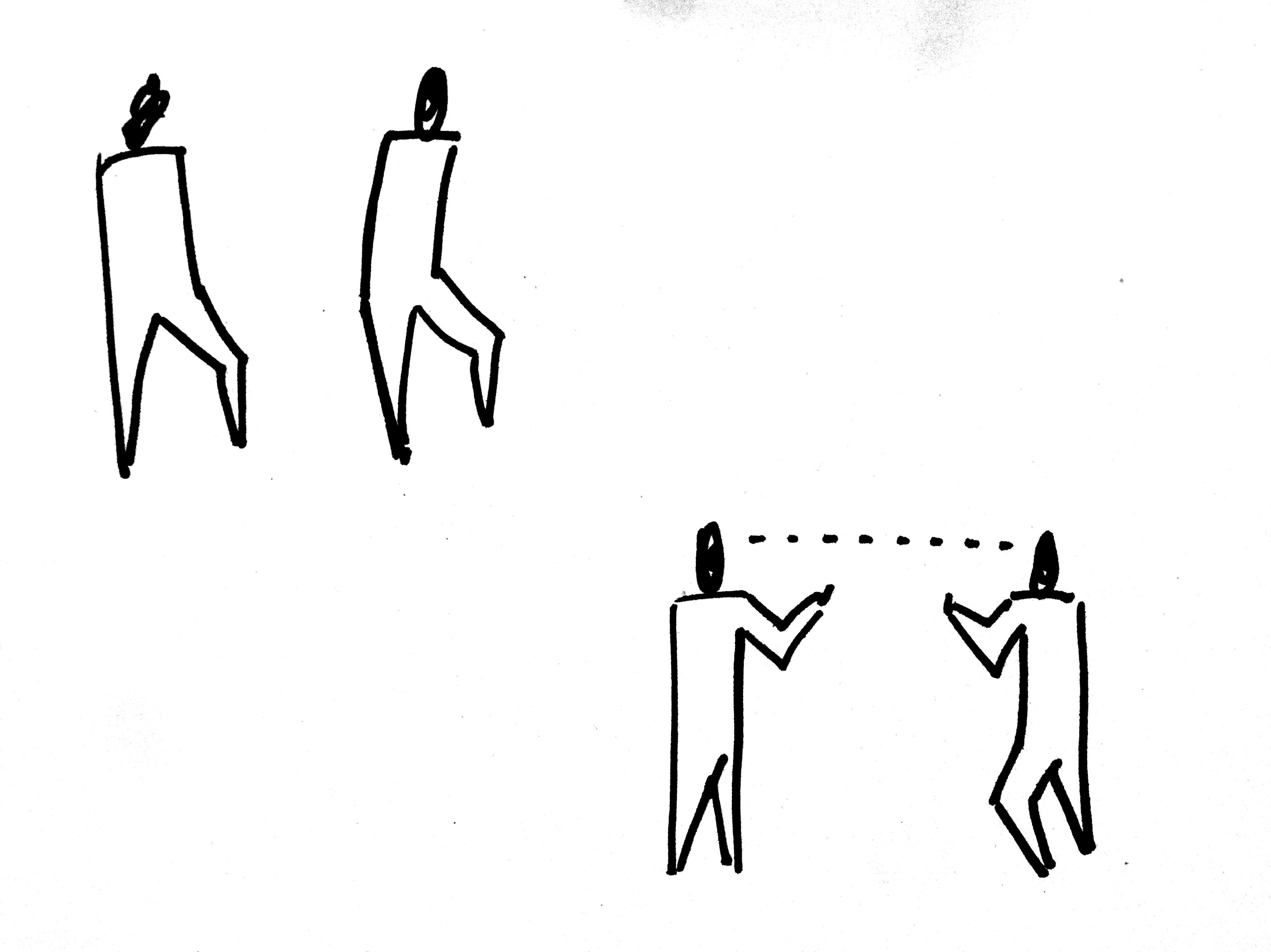
Start with finding your own slowness in movement. What happens with the positioning of your body? Make eye contact with someone in the room and allow yourself to sync to their movement. If you think you are going slow, go even slower. How slow can you go? And does slowness …
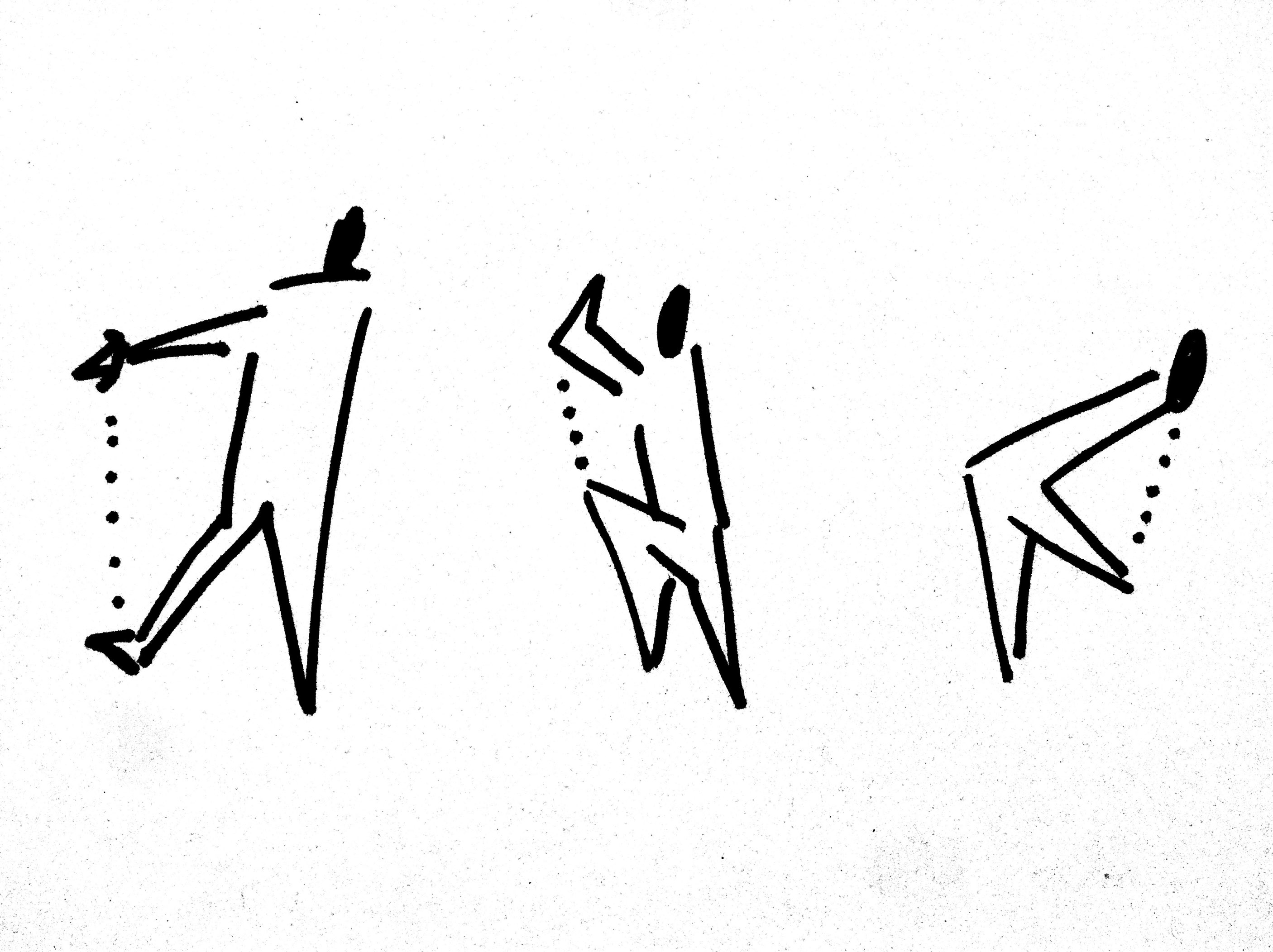
Imagine one of your body parts being connected to another one. It could be your hand to your foot, but also your hips to your elbow or head. The envisioned connection can be linear (through a rope), rather elastic or even inverted, as long as there is a connection between …